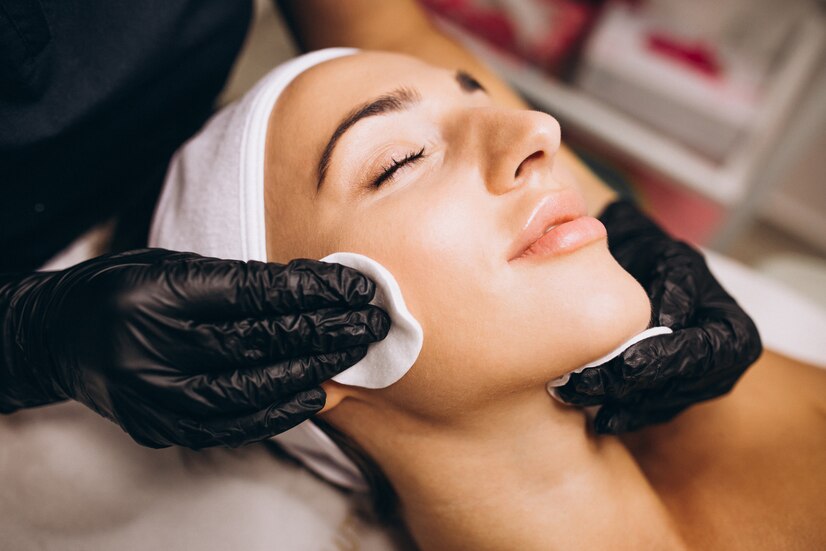
As societies worldwide become more environmentally conscious, the spotlight is increasingly focused on sustainable practices in various industries, including aesthetics healthcare. We recognise professionals’ responsibility to conserve the environment while delivering quality healthcare services. Consequently, the college has embraced a commitment to providing education and training that fosters eco-friendly practice, empowering students to become skilled professionals and environmentally responsible citizens.
In this blog article, we will explore our focus on sustainability and the steps the college takes to integrate eco-friendly practices in its aesthetics education programs. We will discuss the importance of incorporating sustainability into aesthetics healthcare and outline practical tips for students and practitioners keen on adopting an environmentally responsible approach. By showcasing our commitment to sustainability, we highlight their proactive approach to shaping the aesthetics industry’s future to benefit both the clients’ well-being and the environment.
Join us as we investigate the exciting intersection of aesthetics healthcare and sustainability, revealing Grayclay’s innovative approach to environmentally responsible education. By embracing this focus on sustainability, aspiring aesthetics professionals can positively influence the industry and contribute to a greener, healthier future for all.
The Importance of Sustainability in Aesthetics Healthcare
Sustainability is a vital consideration in all industries, including aesthetics healthcare. By prioritising eco-friendly practices, aesthetics professionals can contribute to reducing waste, conserving resources, and minimising their industry’s environmental impact, ultimately benefiting society. Some key reasons to integrate sustainability in aesthetics healthcare are:
1. Reducing Waste and Pollution
Aesthetics practices often generate waste in the form of single-use items, packaging materials, and disposable equipment. By focusing on sustainability in aesthetics, professionals can minimise this waste, reducing the environmental impact of their practice.
2. Supporting Ethical Choices
Embracing sustainability in aesthetics also involves making ethical choices when selecting products and suppliers. Professionals actively seek eco-friendly and humane alternatives and contribute to a more ethical and responsible aesthetics industry.
3. Enhancing Clients’ Experience
Many clients today appreciate businesses that demonstrate a commitment to sustainability. By adopting eco-friendly practices, aesthetics practitioners can improve their clients’ experience, setting themselves apart as responsible professionals who value both their clients’ well-being and the environment.
Integrating Sustainability in Aesthetics Education at Grayclay
We place great emphasis on incorporating sustainability into its aesthetics education programs. Students are introduced to eco-friendly practices and guidelines that can help them become environmentally responsible professionals. The college prioritises the following aspects within its courses:
1. Sustainable Products and Ingredients
Students learn about sustainable skincare products and ingredients, understanding the environmental implications of various choices. Emphasis is placed on selecting eco-friendly, cruelty-free, and ethically sourced materials.
2. Waste Reduction and Recycling
The college’s curriculum highlights the importance of reducing waste in aesthetics practices by implementing recycling systems, minimising single-use items, and promoting reusable alternatives.
3. Energy and Water Conservation
Students are taught practical energy and water conservation measures in an aesthetics clinic, such as energy-efficient equipment and fixtures, low-flow water systems, and energy-saving practices in daily clinic operations.
4. Sustainable Workspace Design
As part of its sustainability focus, we introduce students to sustainable workspace design principles that promote efficient resource usage, natural light, and recyclable building materials.
Practical Tips for Sustainable Aesthetics Practice
There are several practical steps that aesthetics professionals can take to embrace eco-friendly practices in their careers:
1. Evaluate Product Choices
Carefully assess product choices by analysing ingredient lists, packaging materials, and supplier ethics to ensure they align with sustainable practices and values.
2. Minimise Single-use Items
Where possible, reduce single-use items and replace them with sustainable, reusable, and sterilisable alternatives.
3. Implement Recycling Systems
Establish recycling systems within the clinic, safely disposing of waste materials, and collaborating with recycling initiatives available in the local community.
4. Adopt Energy-saving Practices
Opt for energy-efficient settings on heating, ventilation, and air conditioning (HVAC) systems, ensure all electronic devices are switched off when not in use, and utilise energy-saving modes in your aesthetics equipment.
5. Promote Sustainability among Clients
Encourage clients to participate in eco-friendly initiatives by offering incentives for bringing their containers, supporting local recycling programs, or using refillable products.
Pioneering the Path to Sustainable Aesthetics with Grayclay
By prioritising sustainability in its aesthetics education, we demonstrate a forward-thinking approach to the industry’s future, acknowledging the vital role environmentally responsible practices play in shaping its development. We are committed to preparing students for a career that values not only their clients’ health and well-being but also the preservation of our environment.
Begin your journey towards a sustainable career in aesthetics by enrolling in Grayclay’s aesthetic training courses, which foster an environmentally responsible approach to education. Embrace the challenge of redefining the aesthetics industry through sustainable practices and join a community of professionals dedicated to nurturing a greener, brighter future for our planet.


